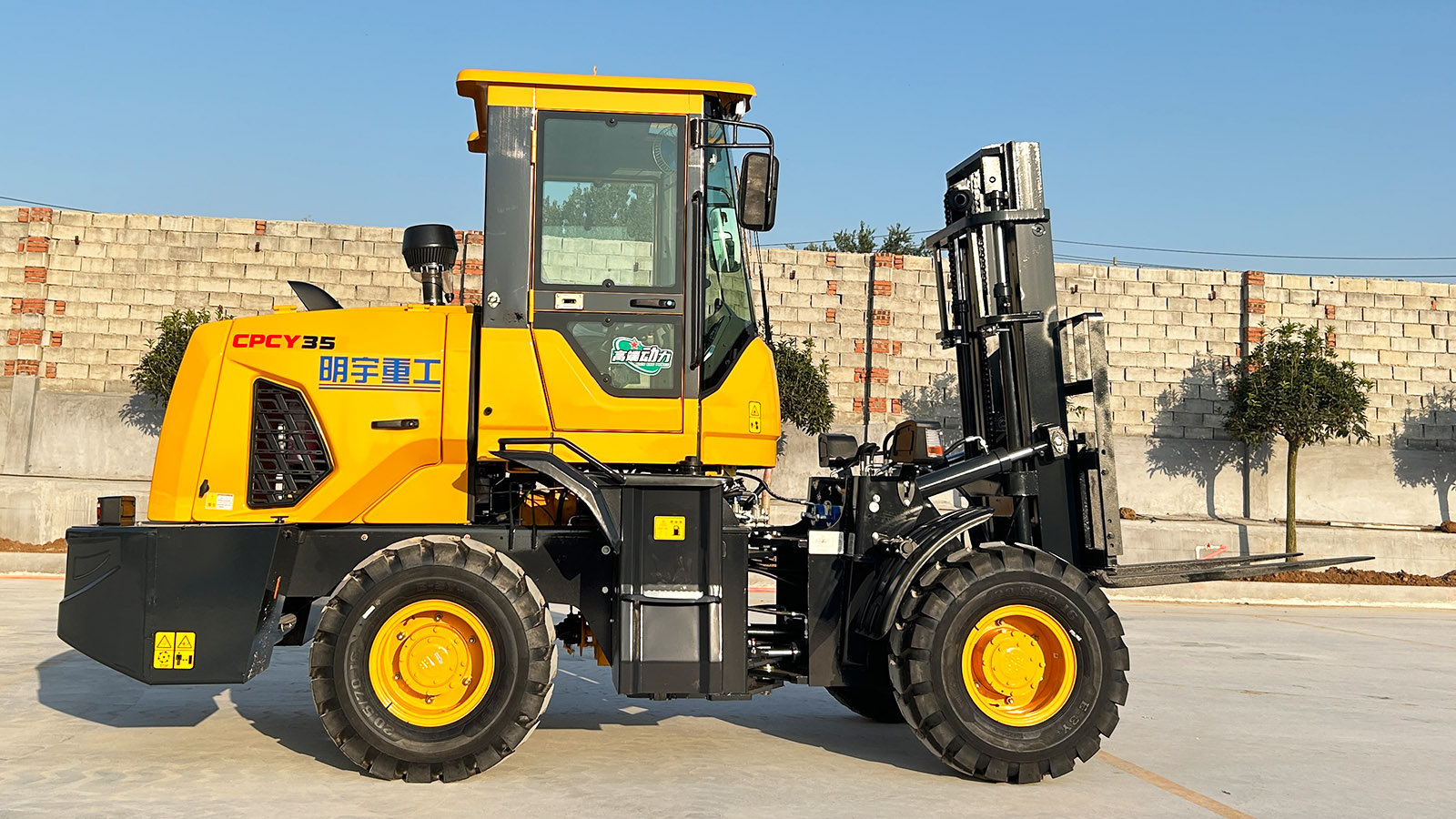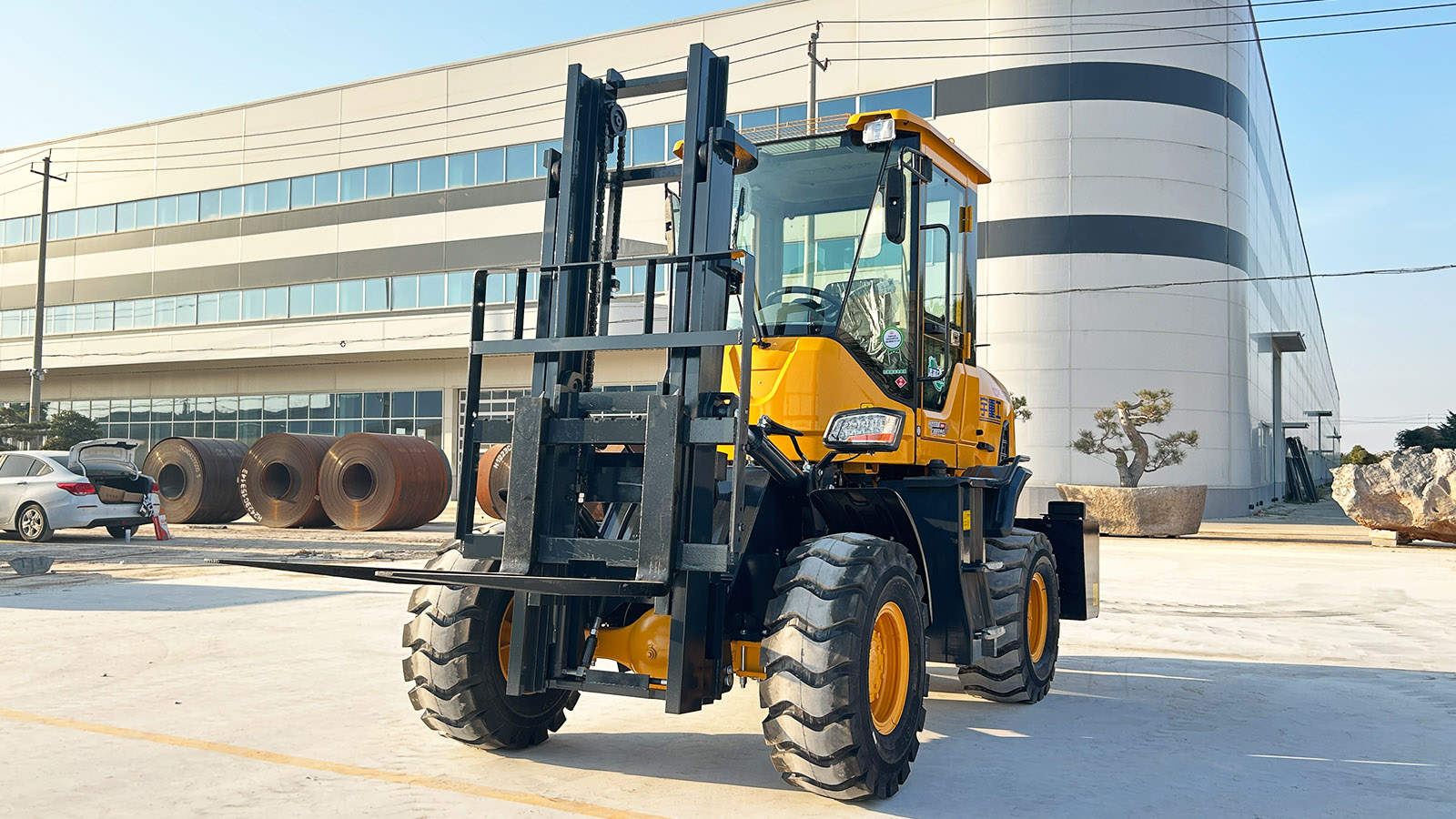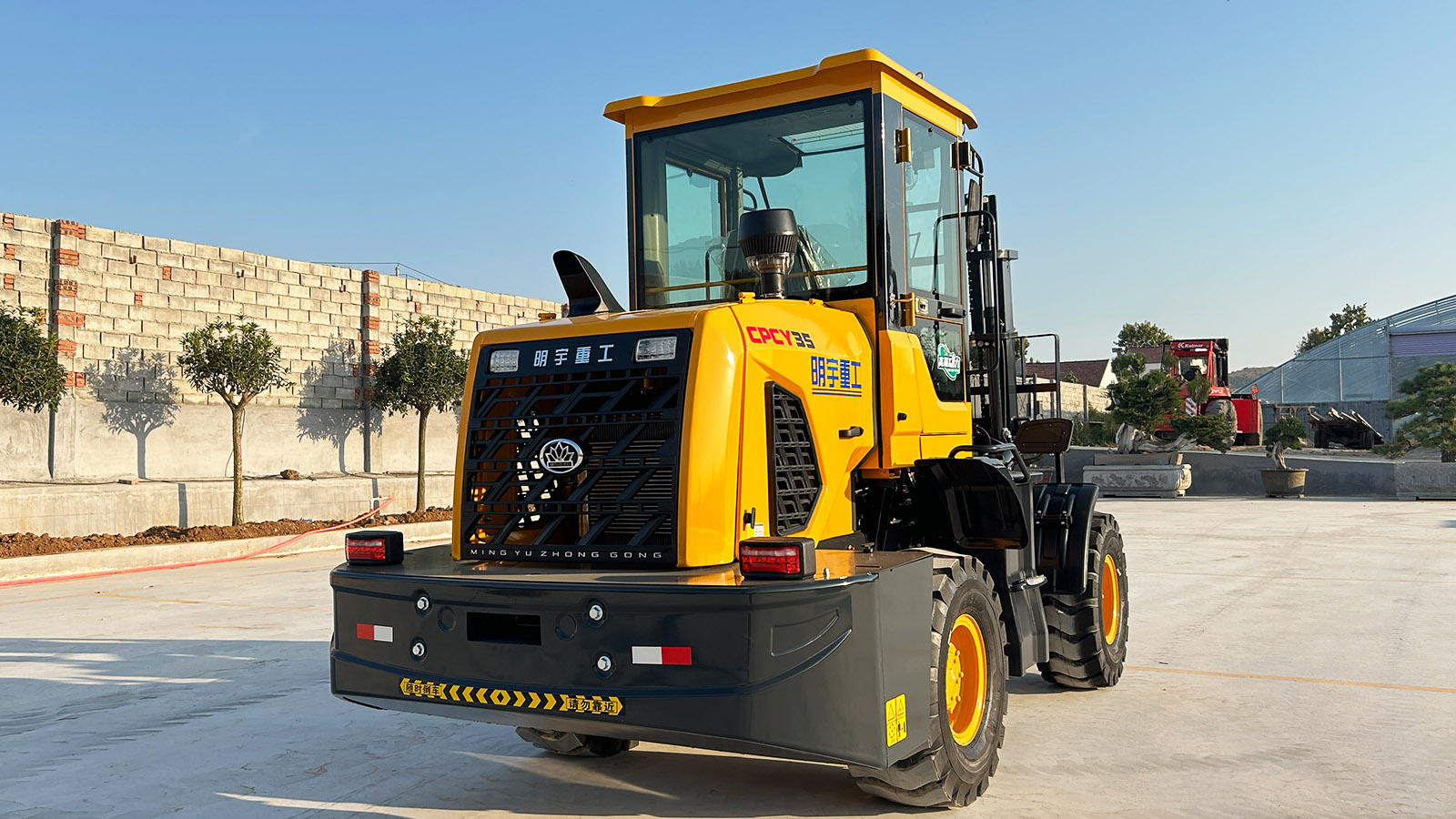I. Introduction
Construction sites are notoriously challenging environments, often characterized by uneven terrain, unpredictable weather, and demanding material handling requirements. In these settings, off-road forklifts are indispensable tools, facilitating the movement of heavy materials and equipment across rough terrain. However, selecting the right off-road forklift is crucial for maximizing efficiency and ensuring safety. This article aims to provide a comprehensive guide to the best off-road forklifts for rough terrain construction sites. We'll explore the unique challenges of these environments, examine the various types of off-road forklifts available, and analyze the key features that determine their suitability. By focusing on terrain handling, lifting capacity, durability, and safety, we'll help you identify the optimal solution for your specific construction needs.
II. Understanding Rough Terrain Construction Site Challenges
Construction sites present a multitude of challenges for material handling equipment. Uneven ground, slopes, and obstacles like rocks and debris require forklifts with exceptional traction and stability. Varying weather conditions, including rain, mud, and extreme temperatures, can further complicate operations. Heavy load requirements and diverse material handling needs demand robust lifting capabilities and versatile attachments. Time constraints and productivity demands necessitate reliable and efficient equipment that can withstand the rigors of daily use. Additionally, the remote locations of many construction sites can pose logistical challenges for maintenance and repairs.
III. Types of Off-Road Forklifts
A. Two-Wheel Drive (2WD) Rough Terrain Forklifts: These forklifts are more affordable and simpler to maintain, but their limited traction makes them less suitable for extremely rough terrain. They are best used on sites with relatively even surfaces and minimal obstacles.
B. Four-Wheel Drive (4WD) Rough Terrain Forklifts: These forklifts offer superior traction and stability, making them ideal for challenging terrain. They provide enhanced maneuverability and can handle slopes and uneven surfaces with ease. However, they come at a higher cost and require more complex maintenance.
C. Telescopic Rough Terrain Forklifts (Telehandlers): Telehandlers are highly versatile, offering extended reach and a wide range of attachments. They are ideal for lifting materials to elevated positions and handling bulky loads. However, their larger size can limit maneuverability in tight spaces, and they typically have a higher cost.
D. Masted Rough Terrain Forklifts: These forklifts provide vertical lift and are more compact than telehandlers. They offer good lifting capacity and are suitable for general material handling tasks. However, their reach is limited compared to telehandlers.
IV. Key Features for Rough Terrain Performance
A. Tire Selection and Traction: Large, heavy-duty tires with aggressive tread patterns are essential for maximizing traction on rough terrain. Tire selection should be based on the specific terrain conditions of the construction site.
B. Suspension and Stability: Robust suspension systems and a wide wheelbase are crucial for maintaining stability on uneven ground. A low center of gravity further enhances stability and prevents rollovers.
C. Engine Power and Drivetrain: High torque and horsepower are necessary for navigating challenging conditions. Durable transmissions and axle designs ensure reliable performance under heavy loads.
D. Lifting Capacity and Height: The forklift's lifting capacity must match the typical load weights on the construction site. Consider the maximum lifting height required for the specific tasks.
E. Frame and Build Quality: Durable construction with high-quality materials is essential for withstanding the rigors of heavy-duty use. Rust and corrosion resistance are also important for prolonging the lifespan of the forklift.
V. Safety and Operator Comfort
A. Rollover Protection System (ROPS) and Falling Object Protective Structure (FOPS): These safety features are essential for protecting operators in the event of a rollover or falling objects.
B. Enhanced Visibility and Lighting: Good visibility is crucial for safe operation on construction sites. Enhanced lighting improves visibility in low-light conditions.
C. Ergonomic Operator Cabin and Controls: An ergonomic operator cabin and intuitive controls reduce operator fatigue and enhance productivity.
D. Advanced Braking Systems and Stability Control: Advanced braking systems and stability control features prevent accidents and ensure safe operation.
E. Telematics and Safety Monitoring Systems: Telematics systems provide real-time data on forklift performance and safety, allowing for proactive maintenance and monitoring.
VI. Attachment Versatility
A. Pallet Forks, Buckets, and Grapples: These attachments are essential for handling various materials on construction sites.
B. Side Shifters and Fork Positioners: These attachments enhance maneuverability and allow for precise load placement.
C. Specialized Attachments for Specific Construction Tasks: Consider specialized attachments for tasks such as pipe handling, concrete placement, and material recycling.
D. Quick-Attach Systems for Efficient Attachment Changes: Quick-attach systems minimize downtime and allow for rapid attachment changes.
VII. Cost Analysis and Total Cost of Ownership
A. Initial Purchase Price vs. Long-Term Value: Consider the long-term value of the forklift, including its durability, reliability, and resale value.
B. Fuel Consumption and Maintenance Costs: Evaluate the fuel efficiency and maintenance requirements of different forklift models.
C. Downtime and Productivity Impacts: Consider the potential impact of downtime on productivity and project timelines.
D. Resale Value and Depreciation: Research the resale value and depreciation rates of different forklift models.
VIII. Best Off-Road Forklift Recommendations
A. For General Construction Use: A 4WD masted rough terrain forklift with robust tires and a durable frame is recommended.
B. For Heavy Lifting and Extended Reach: A telescopic rough terrain forklift (telehandler) with high lifting capacity and versatile attachments is ideal.
C. For Sites with Moderate Terrain: A 2WD rough terrain forklift may be sufficient for sites with relatively even surfaces.
D. For Extremely Challenging Terrain: A 4WD rough terrain forklift with advanced suspension and traction control is essential.
E. Consider specific brands and models known for reliability and durability in rough terrain applications.
IX. Maintenance and Operational Best Practices
A. Regular Maintenance and Inspections: Regular maintenance and inspections are crucial for ensuring the longevity and reliability of off-road forklifts.
B. Proper Tire Pressure and Condition: Maintaining proper tire pressure and condition is essential for maximizing traction and preventing tire damage.
C. Operator Training and Safety Protocols: Thorough operator training and adherence to safety protocols are vital for preventing accidents and ensuring safe operation.
X. Conclusion
The best off-road forklift for rough terrain construction sites depends on the specific needs of the project and the conditions of the site. Carefully evaluate the key features and match the equipment to your requirements for optimal performance and safety.
Post time:Mar.24.2025



